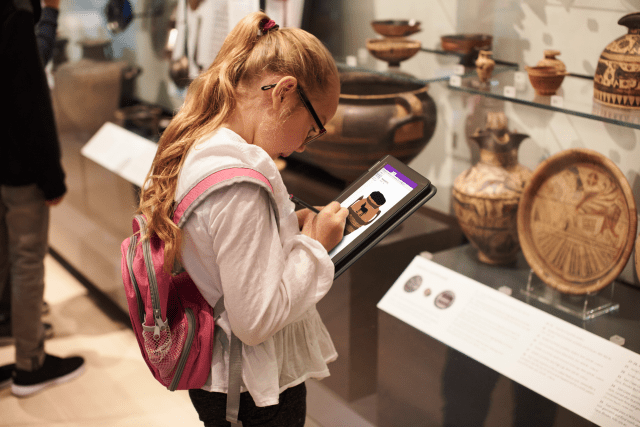

Microsoft will offer Windows 10 PCs to schools for as little as $189 (£135) as it looks to get its hardware and services in as many classrooms as possible.
The company has bolstered its education offering in recent times amid intense competition from Google. The cloud-based Chromebook has established itself in many schools and has led to Microsoft responding with Windows 10 S, a simplified and secured version of the OS.
Four new Windows 10 PCs were shown off at the BETT education show in London, alongside a number of updates to the education version of its software, including Office 365, and a number of new partnerships.
The cheapest PC is the Lenovo 100e, an Intel Celeron Apollo Lake PC, while the $279 Lenovo 300e is a 2 in 1 machine. The remaining two devices are the Lenovo Classmate Leap T303 $199 and Trigono V401 2-in-1, which starts at $299.
All four are ruggedised and spill-proof and can run all-day on a single battery charge. They also support the touch and 3D capabilities included in the Windows 10 Fall Creators Update.
“Affordability is the top priority for many schools,” said Yusuf Mehdi, head of Microsoft’s Windows and Devices Group. “Shrinking budgets can lead schools to choose devices with a stripped-down experience and a limited lifespan, unfortunately costing more over time and offering less to students.
“Our new Windows 10 devices won’t force schools to compromise on features, giving schools cutting-edge tools like touch, inking, and 3D as well as free accessibility technology like Learning Tools, which improve reading comprehension by 10 percentile points for students of all abilities.”
On the software side, Office 365 Education now supports dictation and assignment integration with Capita SIMs and Powerschool. Meanwhile Teams are now accessible on iOS and Android so students and teachers can both stay on top of assignments.
PowerPoint now lets teachers record lessons and then publish them to their Teams classrooms so students can see them at any time.
Microsoft has agreed new partnerships with Lego Education, the BBC, PBS, NASA and Pearson, which will release six ‘mixed reality’ applications for health, history, chemistry and maths. The apps work with Microsoft HoloLens and will be rolled out across the year.
“We built a maths app to try to move teachers away from drawing 3D images on a whiteboard,” said Mark Christian, Learning and Innovation Director for Pearson, said. “Now teachers and pupils can see those shapes in a classroom and interact with them; the visualisation helps. It’s about providing digital tools for teachers and students, not replacing learning and teaching but enhancing it. I think HoloMath can lead to some interesting breakthroughs, we could see some real change.”
Take our Microsoft quiz here!
Apple fined 150m euros over App Tracking Transparency feature that it says abuses Apple's market…
OpenAI to release customisable open-weight model in coming months as it faces pressure from open-source…
Samsung's Bespoke AI-powered fridge monitors food to create shopping lists, displays TikTok videos, locates misplaced…
Huawei sees 38 percent jump in consumer revenues as its smartphone comeback continues to gather…
In world-first, China approves commercial flights for EHang autonomous passenger drone, paving way for imminent…
Microsoft closes down IoT and AI lab it operated in Shanghai tech district in latest…